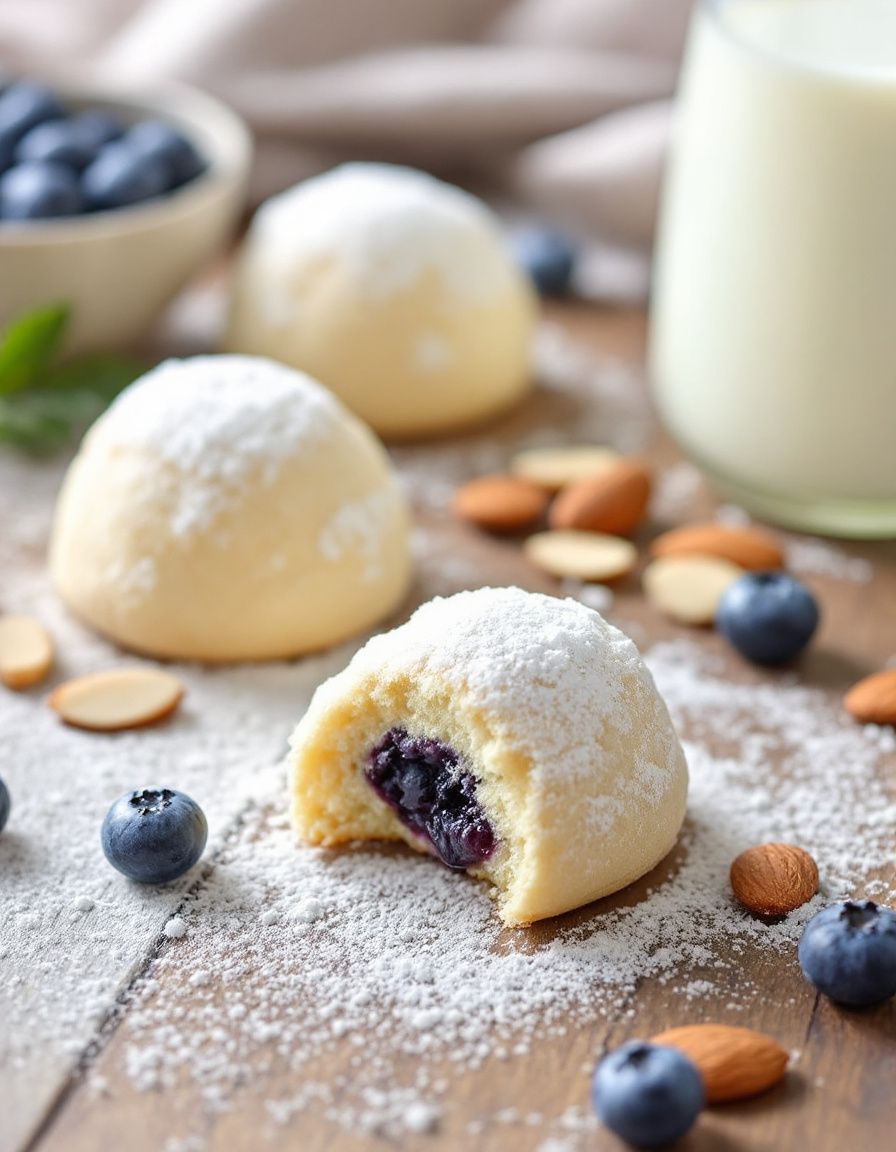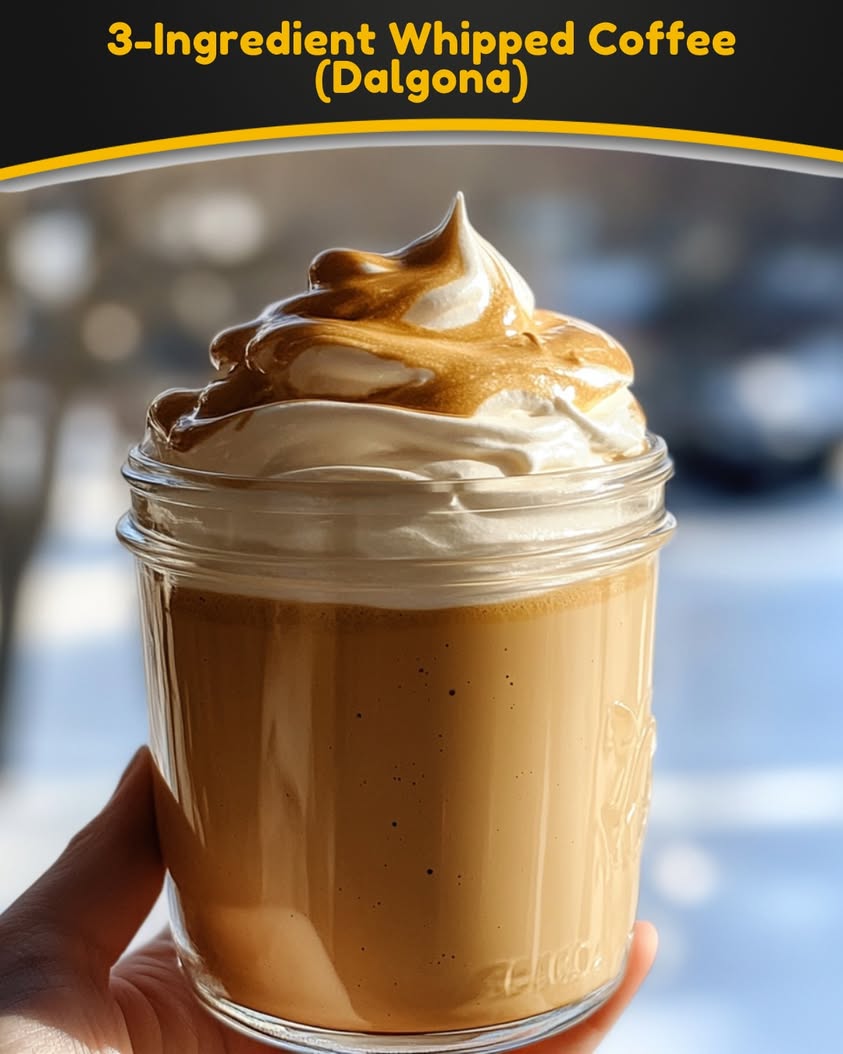Luxurious Chocolate Mousse Cake: A Decadent Delight
Indulge in the rich and creamy experience of this Chocolate Mousse Cake, where every bite transports you to a world of velvety chocolate goodness. This cake is not merely a dessert; it’s a celebration of flavor and texture that awaits you. With its luscious mousse layered over a decadent chocolate cake, this dessert is perfect for any occasion, be it a birthday, anniversary, or just a treat for yourself. The moment you taste it, you will understand why chocolate is often referred to as the ‘food of the gods.’
The allure of this Chocolate Mousse Cake lies in its ability to harmonize deep chocolate flavors with a light and airy mousse texture. The layers of cake and mousse result in a delightful contrast that tantalizes the palate. Each slice reveals a smooth and glossy top, inviting you to indulge. As you savor this dessert, the intense cocoa experience will intermingle with the lusciousness of cream, creating a symphony of flavors that serenades your senses.
Quick Recipe Highlights
- Flavor Profile: This cake offers a rich, deep chocolate flavor, complemented by the subtle sweetness of cream, creating a balanced dessert that satisfies any chocolate lover.
- Texture: The contrast between the dense chocolate cake and the light, airy mousse creates an exceptional mouthfeel that adds depth to every bite.
- Aroma: The aroma of rich cocoa will hijack your senses, enhanced by hints of vanilla as the cake bakes, creating an inviting dessert ambiance.
- Visual Appeal: The luscious dark color of the mousse atop the chocolate cake is elegantly finished with chocolate garnishes, making it a stunning centerpiece.
- Skill Level Needed: While the preparation requires some technique, it’s manageable for anyone with basic baking knowledge, making this cake accessible to home bakers.
- Special Equipment: A springform pan is essential for perfect cake removal, and a mixer will help achieve that velvety mousse consistency effortlessly.
Recipe Overview
- Difficulty Level: This is a medium-level dessert that requires patience and precision in creating layers but is rewarding for any eager baker.
- Category: This Chocolate Mousse Cake fits beautifully into the dessert category, serving as the pièce de résistance for special celebrations and gatherings.
- Cuisine: Originating from French patisserie tradition, this dessert embodies the essence of luxury and indulgence in French culinary heritage.
- Cost: With premium ingredients like dark chocolate and heavy cream, the cake offers a slightly higher cost, but the flavor and presentation are well worth it.
- Season: Best enjoyed year-round, this cake shines during festive seasons, particularly appealing for holiday gatherings and special occasions.
- Occasion: Ideal for celebrations like birthdays, anniversaries, or dinner parties, it makes a statement that impresses guests and loved ones alike.
Why You’ll Love This Recipe
The rich, luxurious taste of this Chocolate Mousse Cake is truly unforgettable. With each slice, you’ll experience the deep, satisfying chocolate flavor that melts in your mouth. The lush mousse combined with the decadent cake base creates a unique texture that keeps every bite engaging. The lightness of the mousse offsets the denser cake, providing a perfect balance of flavors that will make your taste buds rejoice.
Preparation is quite straightforward, making this cake an ideal choice for bakers of various skill levels. With careful steps and timing, you can create impressive layers that are visually stunning yet simple to master. The melting chocolate will fill your kitchen with an enticing aroma, making the baking process an enjoyable experience for everyone involved.
Beyond taste and preparation, this Chocolate Mousse Cake offers nutritional benefits as well. Dark chocolate provides antioxidants, which can be part of a balanced diet. This cake also serves as a delightful indulgence that can be part of guilt-free celebrations in moderation.
Desserts often bring people together, and this cake is perfect for entertaining. Imagine the smiles as you serve this masterpiece to your family and friends, creating memories around the table. It’s a dessert that brings out joy, laughter, and togetherness, transforming any occasion into something truly special.
Cost-effective when compared to restaurant pastries, making this cake at home allows you to create a lavish dessert without the hefty price tag. Your guests will never guess how affordable it was to make, especially when they indulge in its delightful flavors and impressive presentation.
Historical Background and Cultural Significance
The origin of the Chocolate Mousse Cake can be traced back to the heart of French pastry culture, where chocolate became a celebrated ingredient in various desserts during the 18th century. The evolution of this dessert reflects the artistic journey of patisserie, as chefs experimented with techniques to enhance the lightness and intensity of flavors in desserts. Chocolate mousse, known for its airy texture, gained popularity, leading to the creation of layered cakes that feature this delightful mousse.
Culturally, desserts like the Chocolate Mousse Cake hold a special place in celebrations and gatherings, especially in French cuisine. It symbolizes indulgence, celebration, and the joy of sharing rich flavors. Traditionally served in restaurants and cafés, this cake has become a staple in homes, blending culinary technique with comfort.
Over the years, the recipe has evolved, reflecting changes in cooking techniques and the ingredients available. Today, variations incorporate elements such as fruit, spices, or even liqueurs, enhancing the already rich flavor profile.
Regional variations exist worldwide, showcasing localized ingredients and tastes. In Italy, for instance, variations of mousse cakes use espresso to enhance the flavor, while in North America, adding a layer of caramel or different types of chocolate is common, resulting in unique takes on the classic French dessert.
Ingredient Deep Dive
– Dark Chocolate: This essential ingredient not only brings depth of flavor to the cake but also appeals to those seeking a luxurious dessert experience. Selection should emphasize high-quality chocolate (70% cocoa or more) for optimal results. Dark chocolate is also known for its various health benefits, including antioxidant properties and potential heart benefits. When storing, keep chocolate in a cool, dry place away from strong odors. If you’re out of dark chocolate, semi-sweet chocolate can be used as a suitable substitute, albeit altering the flavor slightly.
– Heavy Cream: Integral for achieving that silky mousse texture, heavy cream adds richness to balance the density of the chocolate cake. This versatile ingredient can be whipped into luscious peaks, which are crucial for aerating the mousse. To select the best cream, aim for dairy that contains no additives. It’s best stored in the refrigerator and should be consumed before the expiration date. If needed, substitutes like coconut cream can provide a non-dairy alternative, although the flavor will change.
Common Mistakes to Avoid
- Using Low-Quality Chocolate: Low-quality chocolate can lead to a lack of flavor and a bitter taste. Always choose high-quality chocolate for the best results.
- Overmixing the Mousse: Overmixing can deflate the mousse, removing the airy texture that’s characteristic of this dessert. Mix gently until combined to maintain volume.
- Not Allowing the Cake to Cool Properly: Skipping proper cooling time can cause the mousse to melt upon contact, ruining the presentation. Ensure the cake is completely cool before layering.
- Using Cold Ingredients: Always ensure that your cream is at room temperature for optimal whipping. Cold ingredients don’t mix well, which impacts texture.
- Skipping the Chilling Step: Mousse needs time to set properly. Skipping this can lead to a runny texture instead of the desired firmness.
- Improper Measuring: Accurate measuring of ingredients is vital for recipe success. Invest in quality measuring tools for best results.
- Using a Non-Springform Pan: A non-springform pan can make it nearly impossible to remove the layers without damage. Always use a springform to ensure a clean release.
- Forgetting to Taste: Always taste your cake and mousse mixture before serving. Adjust sweetness or chocolate levels to match your preferences.
- Ignoring Storage Instructions: Proper storage is crucial to maintain texture and flavor. Make sure to follow recommended guidelines for refrigeration.
- Not Decorating Thoughtfully: A well-presented cake can elevate the dessert experience. Don’t overlook garnishes or presentation techniques!
Essential Techniques
Whipping Cream: Whipping cream is crucial for achieving the light and airy texture in chocolate mousse. For success, begin with very cold cream and use a mixer on high speed, watching for soft peaks to form. Avoid over-whipping, as it can cause the cream to curdle. The perfect visual cue is when the cream holds just enough shape without becoming stiff.
Melting Chocolate: Properly melting chocolate is essential for integrating flavors without burning. Use a double boiler or microwave in short intervals, stirring frequently. The chocolate should be glossy and smooth, free of any lumps. Avoid direct heat, as this can cause the chocolate to seize or become grainy.
Pro Tips for Perfect Chocolate Mousse Cake
Start with room-temperature ingredients for better integration and texture.
Sift cocoa powder or flour before incorporating it to ensure a smooth blend.
Chill your mixing bowl and beaters for whipping cream to improve aeration.
To avoid soggy layers, brush the cake with a little coffee or alcohol before applying mousse.
Garnish with fresh berries or mint for a pop of color and freshness.
Use a serrated knife to slice the cake for clean, professional-looking pieces.
Experiment with flavors by adding orange zest or sea salt for an elevated taste.
For a richer chocolate flavor, mix different chocolate varieties (dark and milk) in the mousse.
Variations and Adaptations
Regional variations can offer exciting twists, like adding espresso or hazelnuts to the mousse for an Italian flair. Seasonal adaptations might include incorporating pumpkin spice during fall or vibrant berries in spring and summer. Dietary modifications could make this cake suitable for vegan diets by substituting eggs with aquafaba and using dairy-free chocolate. Flavor variations such as peppermint or orange zest bring a festive touch, while texture modifications could swap some of the mousse for a fruit compote, creating a delightful contrast. Finally, presentation alternatives might incorporate elements like chocolate shavings or edible flowers for elegance.
Serving and Presentation Guide
Plating techniques can significantly enhance the appeal of your Chocolate Mousse Cake. Consider stacking the layers off-center for a stylish look, or garnish with chocolate shards for added flair. Fresh berries or mint leaves provide a refreshing contrast to the rich chocolate. Serving alongside a dollop of whipped cream or a scoop of vanilla ice cream complements the texture and flavor beautifully. Always ensure the cake is at room temperature before serving for optimal flavor. Aim for a neat cut with a warm knife to keep each slice visually appealing.
Wine and Beverage Pairing
For wine pairings, a robust red such as Cabernet Sauvignon complements the rich chocolate flavor of the cake effectively. Alternatively, a sweet dessert wine like port or a fruity red blend enhances the overall experience. Non-alcoholic options such as sparkling water with a splash of raspberry syrup can provide balance. Pairing this dessert with coffee or a strong espresso enhances the chocolate notes, creating a warm, inviting atmosphere. Always serve beverages at the right temperature to achieve the best flavor experience.
Storage and Shelf Life
Proper storage methods include keeping the cake in an airtight container in the refrigerator, where it can last for up to five days. For the best taste and texture, consume it within three days. The ideal temperature for storage is below 40°F (4°C). Signs of spoilage include off smells or a change in texture—drying out or becoming too moist. Reheating is unnecessary for mousse cakes, as they are meant to be enjoyed chilled, although you can consider microwave defrosting if frozen. To freeze, wrap slices tightly in plastic wrap and store in a freezer-safe container for up to three months.
Make Ahead Strategies
Making the Chocolate Mousse Cake ahead of time can save stress on the day of an event. Prepare the chocolate cake a day in advance and allow it to completely cool before wrapping. The mousse can also be prepared the night before, ensuring it gets enough time to set. Store both components separately in airtight containers. On the day of serving, assemble the cake a few hours before and store it in the refrigerator. This method allows the flavors to meld beautifully. For freshness, consider adding garnishes like fruit or whipped cream just before serving.
Scaling Instructions
When halving the recipe, ensure that all ingredients are measured accurately, including baking time adjustments. For doubling or tripling, use larger pans and possibly increase baking time slightly while monitoring doneness. Equipment adjustments may be necessary, so make sure to have sufficient mixing bowls and pans. Timing considerations can vary with size changes; larger cakes may need more time to bake thoroughly. Additionally, if preparing in advance, remember to adjust storage costs since larger desserts take up more space.
Nutritional Deep Dive
A macro breakdown reveals that this dessert, while rich in sugars and fats from chocolate and cream, can be enjoyed in moderation. Each serving offers essential vitamins and minerals from dark chocolate, making it a more wholesome indulgence. Micronutrient analysis shows calcium and iron sourced from dairy and chocolate, contributing beneficial aspects to the diet. Health benefits include the satisfaction this dessert can bring when indulged mindfully. For those managing their portions, keep an eye on serving sizes and consider sharing to reduce caloric intake without sacrificing enjoyment.
Dietary Adaptations
For gluten-free adaptations, substitute all-purpose flour with almond flour or gluten-free blends. Dairy-free versions require using plant-based cream and chocolate to accommodate vegan diets. Low-carb and keto followers can substitute sugar with erythritol or stevia to create a delectable dessert without the carbs. For paleo diets, consider using almond flour and only natural sweeteners. Low-FODMAP variations should use lactose-free cream and ensure chocolate is suitable. Adjustments for other specific diets can be made using creative ingredient swaps, ensuring all guests can enjoy this cake.
Troubleshooting Guide
Texture issues often arise when the mousse is overmixed or not chilled sufficiently, leading to a heavy result instead of a light texture. Flavor balance can suffer if the cake is too sweet; consider reducing sugar in either the cake or mousse. Temperature problems may arise when the cake is too cold; allow it to rest before serving. Equipment challenges, like a stuck springform, can be mitigated by greasing pans properly beforehand. If ingredient substitutions are made, adjust amounts accordingly to maintain the integrity of the recipe, and watch the timing closely if substituting with fresh ingredients.
Recipe Success Stories
Readers have consistently shared positive feedback on the Chocolate Mousse Cake, mentioning how family gatherings have turned into special celebrations due to this dessert. Many have experimented with flavors like matcha or spices, leading to delicious adaptations that showcase their creativity. Photography tips from fellow bakers emphasize natural lighting and simple backgrounds to really highlight the cake’s elegance. Successful stories include a home baker who created a stunning showstopper for a wedding, earning rave reviews from guests and boosting confidence to explore more intricate recipes.
Frequently Asked Questions
Can I use milk chocolate instead of dark chocolate?
Yes, you can use milk chocolate for a different flavor profile, but keep in mind that it will produce a sweeter mousse compared to using dark chocolate.
How should I store the leftovers?
The leftovers should be stored in an airtight container in the refrigerator and can be enjoyed up to five days later, although it is best within three days for optimal flavor.
Can I freeze the Chocolate Mousse Cake?
Yes, you can freeze the cake. Wrap it tightly in plastic wrap and then place it in a freezer-safe container. It will last for up to three months in the freezer.
What can I substitute for eggs?
If you need to make this cake egg-free, you can use aquafaba, which is the liquid from canned chickpeas, or a flaxseed meal mixed with water as a binder.
Can I make this cake in advance?
Absolutely! You can prepare the cake and mousse a day prior to serving, allowing it to chill completely overnight for better flavors.
Do I have to use a springform pan?
While a springform pan is recommended for easy removal, you can use a regular cake pan—just make sure to grease it well for easier release.
How do I achieve the perfect mousse texture?
The key is to gently fold whipped cream into the chocolate mixture without deflating it and to allow adequate chilling time for the mousse to set properly.
Should I use bittersweet or semi-sweet chocolate?
Using bittersweet chocolate will provide a richer flavor, but semi-sweet chocolate can work effectively, depending on your personal sweetness preference.
Can I add flavors to the mousse?
Yes, you can enhance the mousse with flavors like espresso, vanilla extract, or even liqueurs such as Grand Marnier for an adult twist.
What garnishes work best with this cake?
Popular garnishes include fresh berries, whipped cream, chocolate shavings, or even a dusting of cocoa powder for an elegant finishing touch.
Additional Resources
If you enjoyed making this Chocolate Mousse Cake, check out our related dessert recipes such as classic cheesecake and tiramisu. Our guides on mastering whipping cream and understanding chocolate varieties can further enhance your baking skills. For those interested in equipment, we’ve compiled a list of essential baking tools that make the making of cakes more manageable and enjoyable. Don’t hesitate to explore seasonal variations to embrace the flavors of different times of the year in your baking endeavors.
Join the Conversation
We would love to hear about your baking experiences, reviews, and adaptations of the Chocolate Mousse Cake. Share your photography tips and engage with us on social media by tagging your posts. Whether it’s a variation you’ve tried or a memorable moment from serving, your stories help build a community of passionate bakers. Together, let’s explore new flavors, techniques, and create delightful experiences in the kitchen!
The Recipe
Chocolate Mousse Cake
Serves: 8
Prep Time: 30 mins
Cook Time: 15 mins
Total Time: 45 mins
Kitchen Equipment Needed
- Springform pan
- Mixing bowls
- Electric mixer
- Spatula
- Double boiler or microwave-safe bowl
Ingredients
- 200g dark chocolate (at least 70% cocoa)
- 100g unsalted butter
- 4 large eggs, separated
- 100g granulated sugar
- 300ml heavy cream
- 1 tsp vanilla extract
- Pinch of salt
- Cocoa powder for dusting
Directions
- Preheat your oven to 350°F (175°C) and grease your springform pan.
- Melt the chocolate and butter together in a double boiler or in the microwave, stirring until smooth.
- In a bowl, whisk the egg yolks with half of the sugar until pale and creamy. Add the melted chocolate mixture, mixing until well combined.
- In a separate bowl, whip the heavy cream until soft peaks form, then fold it into the chocolate mixture gently.
- In another bowl, beat the egg whites with a pinch of salt until soft peaks form, then gradually add the remaining sugar and continue beating until stiff peaks form.
- Fold the egg whites carefully into the chocolate mixture in thirds, ensuring you maintain the light texture.
- Pour into the prepared pan and bake for 15 minutes, until the cake is set but slightly wobbly in the center. Let it cool completely in the pan.
- Once cooled, refrigerate for at least 4 hours (preferably overnight) to let the mousse fully set.
- Before serving, dust with cocoa powder and garnish as desired.
Recipe Notes
- For a stronger chocolate flavor, consider using a mix of different chocolates.
- This cake can be made a few days in advance and stored in the fridge to allow flavors to meld.
- Feel free to customize garnishes with seasonal fruits or nuts for added flavor and aesthetic appeal.









